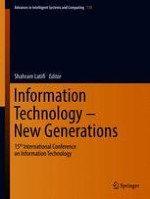2018 | OriginalPaper | Buchkapitel
54. A Initial Experimental Evaluation of the NeuroMessenger: A Collaborative Tool to Improve the Empathy of Text Interactions
verfasst von : Breno Santana Santos, Methanias Colaço Júnior, Janisson Gois de Souza
Erschienen in: Information Technology - New Generations
Aktivieren Sie unsere intelligente Suche, um passende Fachinhalte oder Patente zu finden.
Wählen Sie Textabschnitte aus um mit Künstlicher Intelligenz passenden Patente zu finden. powered by
Markieren Sie Textabschnitte, um KI-gestützt weitere passende Inhalte zu finden. powered by
